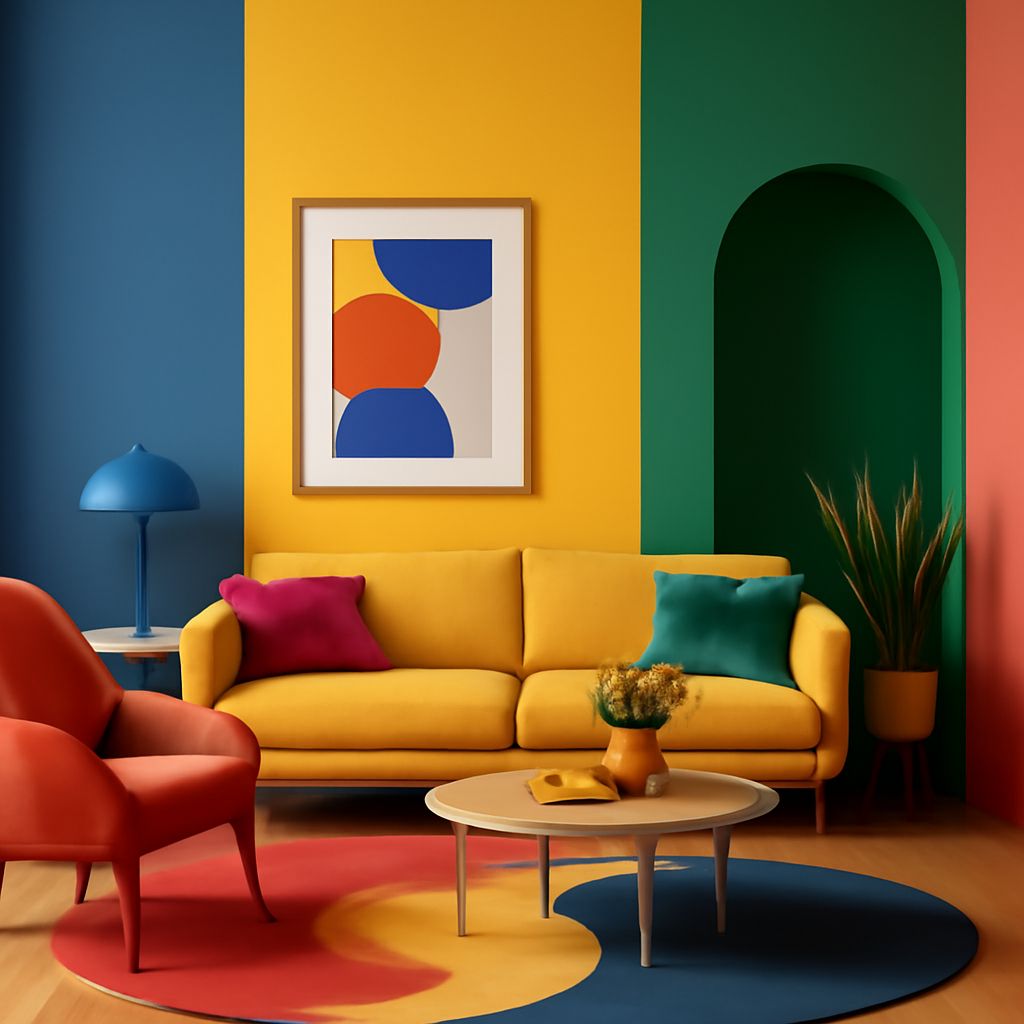Table of Contents
Introduction
Colors have the power to transform spaces, influencing mood, perception, and the overall ambiance of your home. Choosing the right color scheme can create vibrant, lively settings that invigorate both the mind and soul. Whether you are redesigning a room or starting from scratch, these color schemes can help you create the perfect vibrant space.
Understanding Color Theory
Before diving into specific schemes, it’s essential to understand basic color theory. Colors can be categorized into:
- Primary Colors (Red, Blue, Yellow)
- Secondary Colors (Green, Orange, Purple)
- Tertiary Colors (Combinations of primary and secondary colors)
Colors also have temperature attributes, either warm (like red and yellow) or cool (such as blue and green), impacting how a space feels.
Vibrant Color Schemes to Explore
Here are some exciting color schemes that breathe life into any room:
- Bold Monochrome: Choose a bold color like teal or magenta and use varying shades, tints, and tones of that color throughout the space.
- Complementary Contrasts: Use colors opposite each other on the color wheel, such as blue and orange, for vibrant contrast.
- Triadic Harmony: Select three colors that are evenly spaced on the color wheel, like red, yellow, and blue, to create an energetic balance.
- Analogous Serenity: Combine three colors that are next to each other on the color wheel, such as green, teal, and blue, for a soothing yet vibrant look.
Implementing These Schemes
Implementing vibrant color schemes involves:
- Accent Walls: Paint one wall in a bold color to become the focal point of the room.
- Furniture and Decor: Incorporate vibrant hues through furniture pieces, cushions, and artwork.
- Lighting: Use lighting to enhance the vibrancy of colors, ensuring they pop in artificial and natural light.
Making the Most of Small Spaces
In smaller rooms, vibrant colors can create the illusion of space and depth:
- Vertical Stripes: Utilize vertical stripes to elongate walls and add height.
- Reflective Surfaces: Mirrors and glossy finishes can reflect light and color, enlarging feel.
Maintaining Balance
While vibrant colors invigorate, balance is crucial:
- Neutrals: Pair vibrant colors with neutral shades to avoid overwhelming the space.
- Focus: Limit the number of vibrant areas to just one or two, enabling them to stand out.
Key Differences: Color Types
| Type | Characteristics | Effect |
|---|---|---|
| Warm Colors | Reds, oranges, yellows | Energizing, welcoming |
| Cool Colors | Blues, greens, purples | Calming, soothing |
FAQ
How do I choose the right color scheme for my room?
Consider the room’s purpose, lighting, and existing furniture. Experiment with color swatches to see what resonates best.
Can vibrant colors work in a minimalist design?
Yes, by using a few bold colors as accents within a neutral palette, you can maintain simplicity while adding vibrancy.
Do vibrant colors affect mood?
Absolutely. Colors like red and yellow can energize a space, while blues and greens can calm it down.
How often should I update my color scheme?
Update your color scheme based on personal preference, typically every 5-7 years, or when your tastes or lifestyle change.
What are safe ways to experiment with vibrant colors?
Start with small accessories or paint samples on a section of the wall to see how the colors look in different lighting conditions.
Conclusion
Creating vibrant spaces with exciting color schemes can breathe new life into your home, making it both dynamic and welcoming. By carefully choosing and implementing colors, you can drastically change both the look and feel of a room. Whether opting for bold contrasts or harmonious blends, color is your most powerful tool in interior design.

